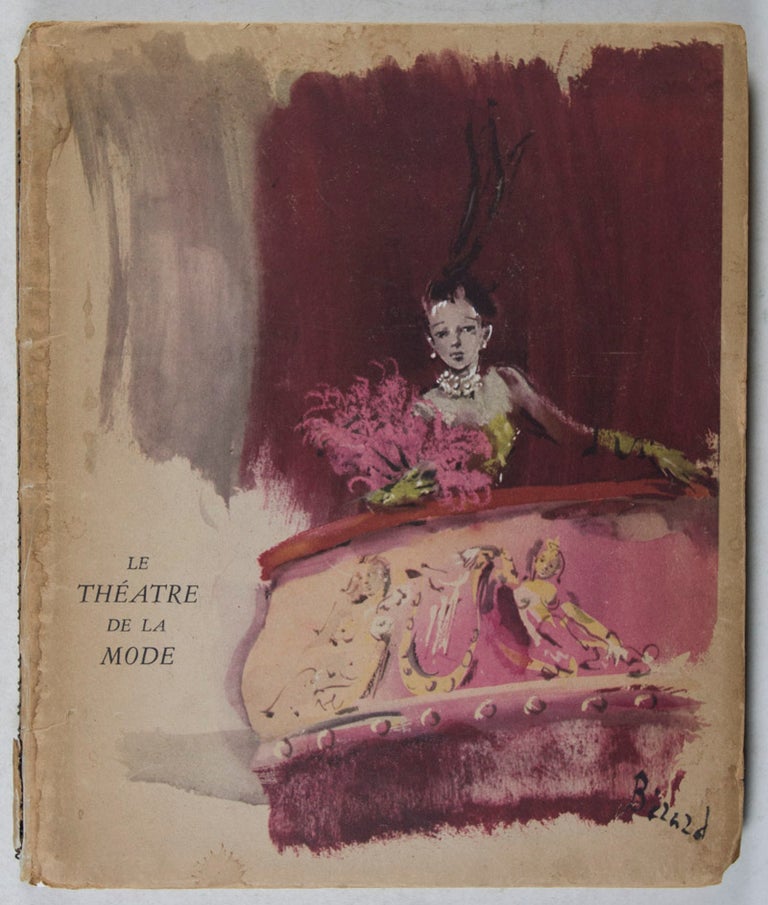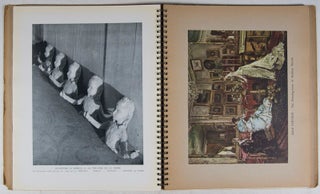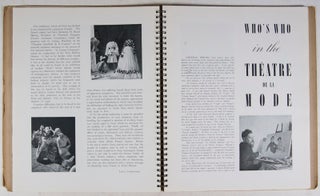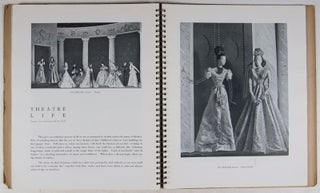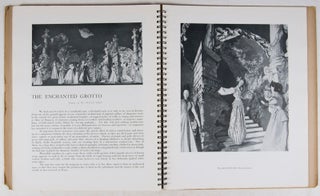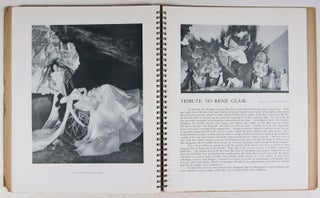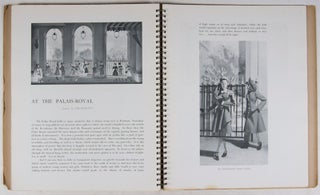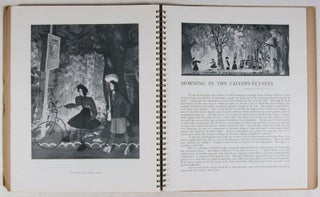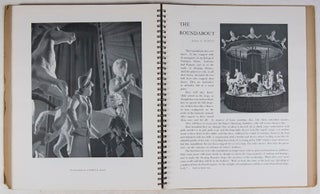The Exhibition Le Théatre de la Mode in London
Paris: La Chambre Syndicale de la Couture Parisienne, 1945. First edition. Softcover. Small folio. Unpaginated. [46]pp (Advertisement), [84]pp (Text), [8]pp (Advertisement). Original illustrated wrappers by French artist, fashion illustrator and designer Christian Bérard. Spiral bound. Illustrated with three tipped-in color plates, numerous illustrations and 47 b/w photographic reproductions by Alinari, Brogli, Bulloz, Calavas, Fachetti, Giraudon, Bernand, Brassai, Robert Doisneau, Guy le Boyer, Schaall, Seeberger, Lipnitzki and Ostier, this scarce work is the official catalog of the London exhibition of "Le Théatre de la Mode", with Introductory text by Lucien Lelong, and text contributions by Louis Chéronnet and Gérard Bauer.
Le Théatre de la Mode (Theatre of Fashion) was a 1945-1946 touring exhibit of fashion mannequins, approximately 1/3 the size of human scale, crafted by top Paris fashion designers. It was created to raise funds for war survivors and to help revive the French fashion industry in the aftermath of World War II*. The French fashion industry was an important economic and cultural force in Paris when World War II began. There were 70 registered couture houses in Paris, and many other smaller designers.
The war had a severe impact on the industry. Couturiers and buyers fled occupied France or closed their businesses. Clothing businesses that struggled to remain open had to deal with extreme shortages of cloth, thread, and other sewing supplies. The occupying Germans intended to displace Paris with Berlin as a centre of European fashion design. The Nazi regime planned to turn Berlin and Vienna into the centres of European couture, with head offices there and an official administration, introducing subsidies for German clothing makers, and demanding that important people in the French fashion industry be sent to Germany to establish a dressmaking school there. Haute Couture's place in France's economy was key to this plan: an exported dress made by one of France's leading couturiers was said to be worth "ten tons of coal", and a litre of fine French perfume was worth "two tons of petrol". French fashion was also not only important economically, it was a vital part of France's national cultural identity. French designers resisted the Nazi regime's plans; Lucien Lelong, president of the Chambre Syndicale de la Couture Parisienne, proclaimed, 'It is in Paris or it is nowhere.'
After Paris was liberated, the idea for a miniature theatre of fashion came from Robert Ricci, son of couturier Nina Ricci. All materials were in short supply at the end of World War II, and Ricci proposed using miniature mannequins, or fashion dolls, to address the need to conserve textiles, leather, fur, and so on. The mannequins were 27 1/2" (700 mm) tall, fabricated of wire. Some 60 Paris couturiers joined together and volunteered their scrap materials and labour to create miniature clothes in new styles for the exhibit. Milliners created miniature hats, hairstylists gave the mannequins individual coiffures, and jewellers such as Van Cleef and Arpels and Cartier contributed small necklaces and accessories. Some seamstresses even crafted miniature undergarments to go under the couture designs. Once work was completed on the Théâtre de la Mode, it became a touring exhibition of nearly 200 doll-size figurines in 15 elaborate artist-created sets. It opened at the Louvre in Paris on 28 March 1945, and was enormously popular, drawing 100,000 visitors and raising a million francs for war relief. With the success of the exhibit in Paris, the Théâtre de la Mode went on a tour of Europe, with shows in London, Leeds, Barcelona, Stockholm, Copenhagen and Vienna. To promote the exhibit abroad, a French government official wrote to the Ambassador of France in Britain: "France has little, alas to export, but she has her appreciation of beautiful things and the skill of her couture houses". After touring Europe in 1945, the mannequins were outfitted with new clothes designed for the 1946 season and the exhibition traveled to the United States, where it was displayed in New York City and San Francisco in 1946. After the final show, the mannequins were left behind in San Francisco, while the jewellery was returned to Paris.
This catalog is complete, and includes no less than 54 pages of advertisement for French Haute Couture designers. Head and tail of spine slightly chipped. Closed tear at lower front joint. Clear water-staining along edges of wrappers. Minor age-toning along paper margin. Wrappers in overall good- to good, interior in very good condition. g- to vg. Item #39597
* The original Théâtre de la Mode exhibit toured Europe and then the United States, and is now part of the permanent collections of the Maryhill Museum of Art in Washington State in the United States.
Price: $1,250.00

